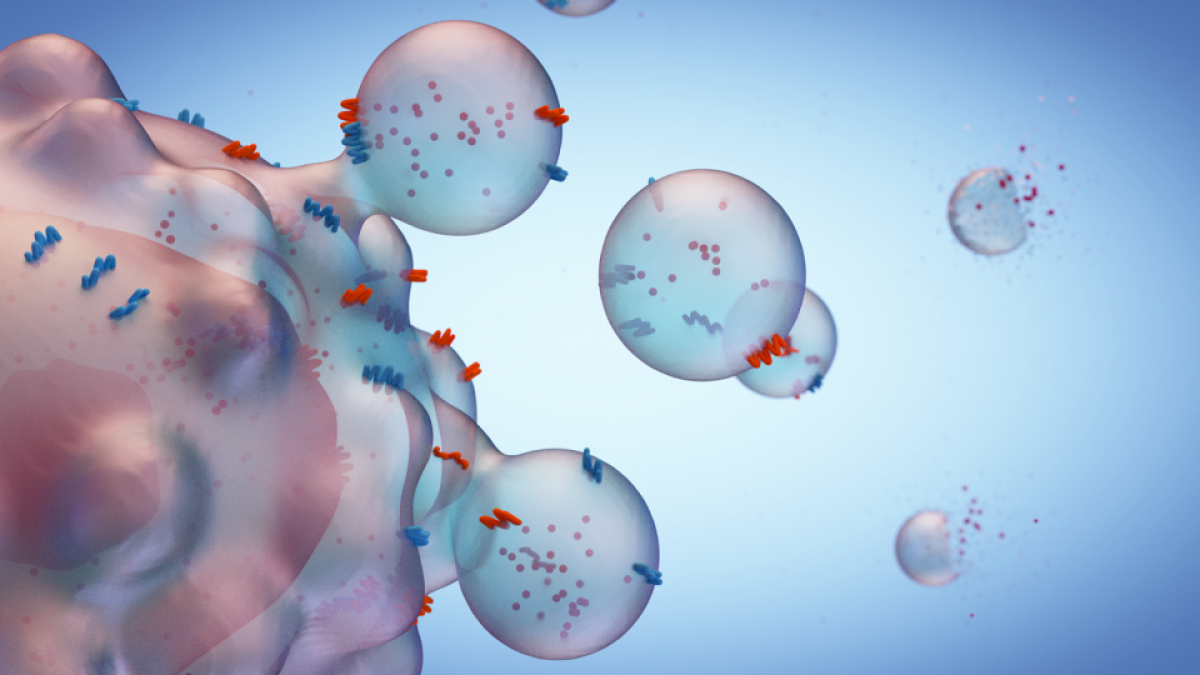Editor's note: This story is being highlighted in ASU Now's year in review. To read more top stories from 2017, click here.
Pancreatic cancer, one of the nation’s deadliest diseases, kills 80 percent of those diagnosed within one year, but an ASU researcher has devised an early detection technique that could help improve those odds, according to a new study.
Biomedical engineering professor Tony Hu, of the Biodesign Virginia G. Piper Center for Personalized Diagnostics, and colleagues, in research published online by the journal Nature: Biomedical Engineering, describe a method for finding tiny bubbles of material called extracellular vesicles, which can identify pancreatic cancer in its initial stages.
Tony Hu
“Pancreatic cancer is one type of cancer we desperately need an early blood biomarker for,” Hu said.
Typically, pancreatic cancer, which kills about 40,000 people a year, has few symptoms, spreads quickly and isn’t diagnosed until it’s in an advanced stage. About 95 percent of patients die within five years of diagnosis.
“Other technology has been used for detection, but it doesn’t work very well because of the nature of this cancer,” Hu said. “It’s really hard to capture an early diagnostic signal when there are no symptoms. It’s not like breast cancer, where you may feel pain and you can easily check for an abnormal growth.”
Hu’s research, a pilot study involving nearly 160 people, showed the ability to differentiate patients with pancreatic cancer, pancreatitis and healthy subjects.
If proved effective on a larger scale, it could lead to a screening exam that could save lives. Further, the technique may ultimately be used to detect a range of diseases based on their unique extracellular vesicle signatures. (Hu’s team, in a small study, has already shown the ability to detect tuberculosis.)
The new method detects EVs derived from tumors that carry a particular surface protein that functions as a telltale marker for pancreatic cancer. The ability to accurately detect this protein, known as EphA2, may allow it to serve as a signpost that could diagnose even the earliest stages of pancreatic cancer.
To learn more about the science, click here.
Top image: Exosomes are a form of extracellular vesicle released from most kinds of prokaryotic and eukaryotic cells. Once thought to be mere detritus from cellular metabolism, they are now linked with many critical forms of cell signaling and immune function and play a vital role in a host of diseases, particularly cancer, where they may act to aid metastasis and thwart anti-cancer therapies. Graphic by Jason Drees.
More Science and technology

ASU to host 2 new 51 Pegasi b Fellows, cementing leadership in exoplanet research
Arizona State University continues its rapid rise in planetary astronomy, welcoming two new 51 Pegasi b Fellows to its exoplanet research team in fall 2025. The Heising-Simons Foundation awarded the…

ASU students win big at homeland security design challenge
By Cynthia GerberArizona State University students took home five prizes — including two first-place victories — from this year’s Designing Actionable Solutions for a Secure Homeland student design…

Swarm science: Oral bacteria move in waves to spread and survive
Swarming behaviors appear everywhere in nature — from schools of fish darting in synchrony to locusts sweeping across landscapes in coordinated waves. On winter evenings, just before dusk, hundreds…



